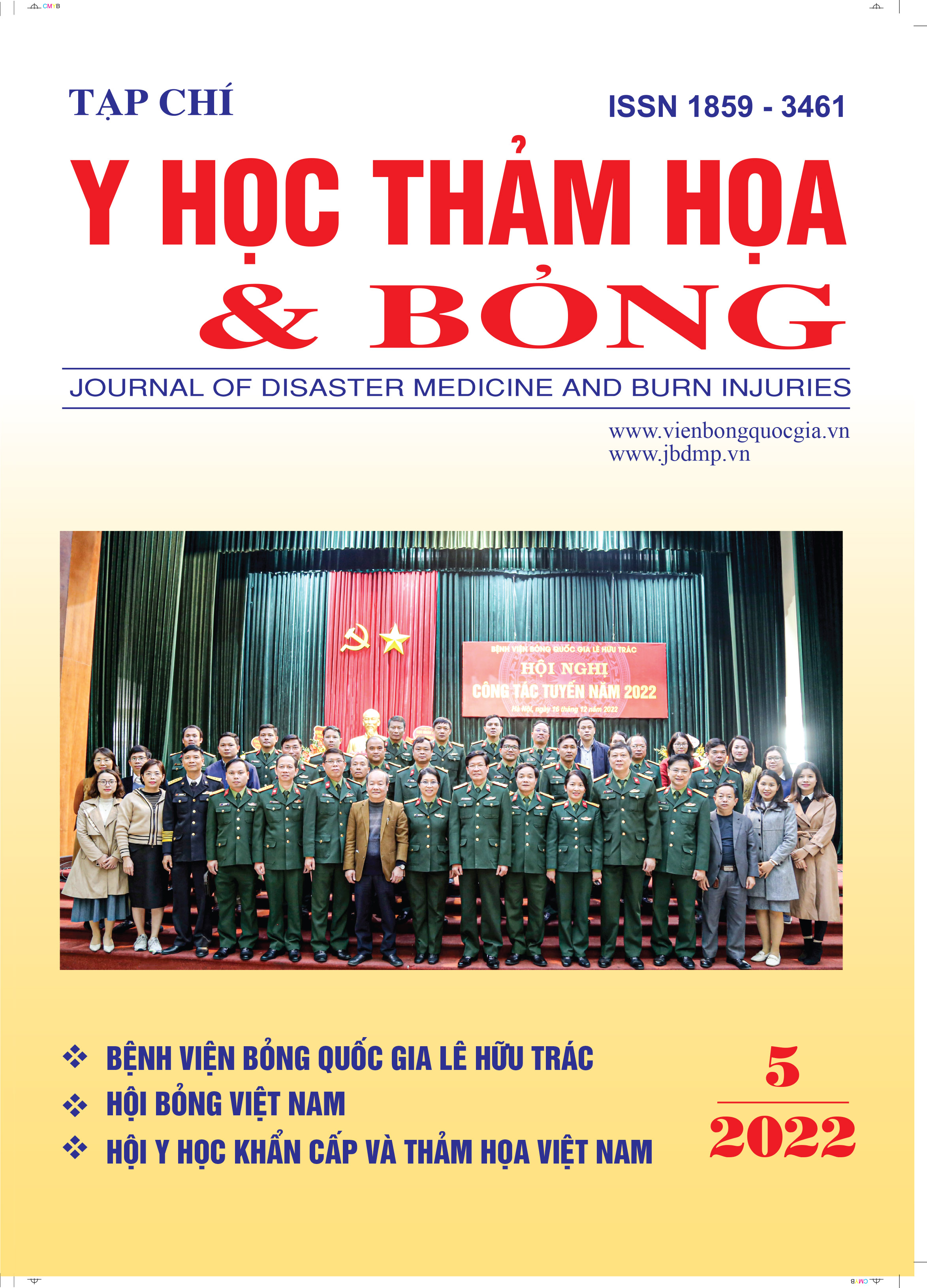Evaluate the effect of autologous platelet-rich plasma on skin flap survival in order to improve the survival rate of the transplanted skin flap
Main Article Content
Abstract
Purpose: Evaluate the effect of autologous platelet-rich plasma gel on skin flap survival in order to improve the survival rate of the transplanted skin flap.
Subjects and methods: 25 Sprague-Dawley rats were used to evaluate the effect of platelet-rich plasma (PRP) in increasing flap survival and determining the optimal time to lift the skin flap. Design 2 random skin flaps measuring 1.5 x 4.5 cm symmetrically on both sides of the midline of the mouse's back. PRP was injected into one side of the skin flap after being cut off from the background, and placing the silicone to separate from the flap base. Compare the two flaps at days 3, 7, 10, 14, and 21 about the skin survival rate and histopathological characteristics.
Results: From day 7 onwards, the mean survival rate of skin flaps in the PRP injection group was higher than in the control group. In addition, it was also found that platelet-rich plasma reduced inflammatory infiltrates and improved wound healing, angiogenesis, and granulomatous tissue proliferation at the time days 7,10, 14, and 21.
Conclusions: PRP is effective in improving the survival of skin flaps by increasing wound healing, angiogenesis, and granulation tissue.
Article Details
Keywords
Platelet-rich plasma (PRP)
References
2. Everts P., Onishi K., Jayaram P., et al (2020). Platelet-rich plasma: new performance understandings and therapeutic considerations in 2020. International journal of molecular sciences., 21(20): 7794.
3. Arifin W.N., Zahiruddin W.M. (2017). Sample size calculation in animal studies using resource equation approach. The Malaysian journal of medical science., 24(5):101.
4. Gupta A., Kumar P. (2015). Assessment of the histological state of the healing wound. Plastic and Aesthetic Research., 2, 239-242.
5. Chai J., Ge J., Zou, J. (2019). Effect of autologous platelet-rich plasma gel on skin flap survival. Medical science monitor: international medical journal of experimental and clinical research.,25,1611.
6. Li W., Enomoto M., Ukegawa M., et al (2012). Subcutaneous injections of platelet-rich plasma into skin flaps modulate proangiogenic gene expression and improve survival rates. Plastic and reconstructive surgery., 129(4): 858-866.
7. Evans D.C., Evans B.G. (2018). The Effects of Platelet-Rich Plasma and Activated Collagen on Wound Healing in Primary Total Joint Arthroplasty. Orthopedics., 41(2): 262-267.


